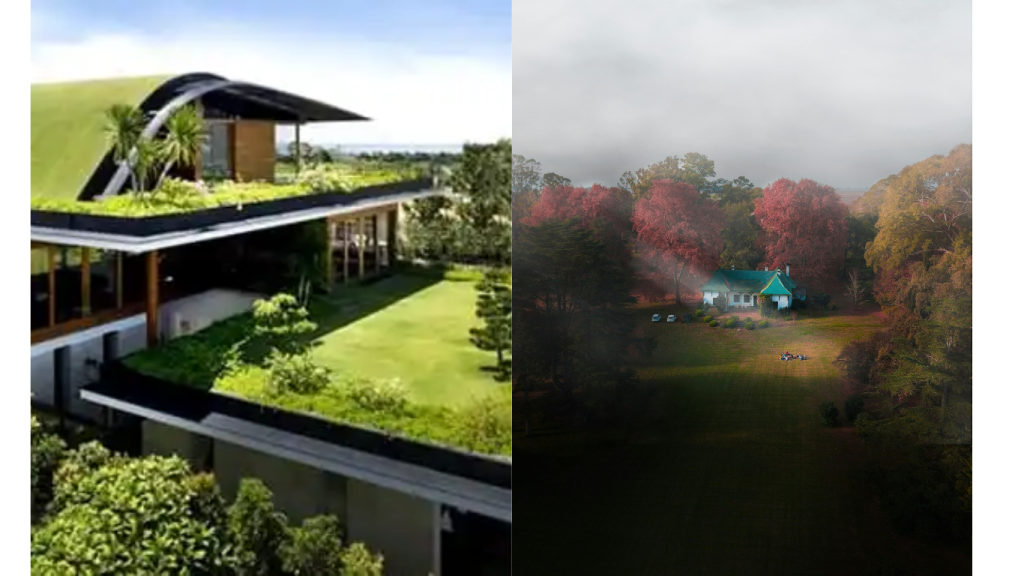In today’s world, where climate change and environmental degradation are pressing issues, transforming your house into an eco-friendly haven is not just a noble pursuit but also a practical one. Eco-friendly living offers numerous benefits, including reduced utility bills, improved indoor air quality, and a smaller carbon footprint.
This comprehensive guide will help you make informed decisions and provide actionable steps to create a sustainable and eco-conscious home environment.
Making the Decision to Go Green
Before embarking on your journey to an eco-friendly home, it’s essential to consider several factors:
- Cost: Initial investments might be higher, but the long-term savings on energy and water bills often offset these costs.
- Lifestyle Changes: Adopting a greener lifestyle may require changes in daily habits and a commitment to sustainable living.
- Benefits: Beyond financial savings, going green contributes to a healthier living environment and a positive impact on the planet.
Energy Efficiency: From Lighting to Appliances
Improving energy efficiency is one of the most impactful steps you can take. Here are some tips:
- Lighting: Switch to LED light bulbs, which use up to 80% less energy and last longer than traditional incandescent bulbs.
- Appliances: Upgrade to energy-efficient appliances, which consume less electricity and often come with Energy Star ratings.
- Smart Technologies: Implement smart thermostats, lighting controls, and energy monitoring systems to optimize energy use and reduce waste.
Sustainable Building Materials and Practices
When renovating or building, opt for materials and practices that minimize environmental impact:
- Recycled Materials: Use recycled steel, reclaimed wood, and other repurposed materials to reduce waste.
- Sustainable Materials: Consider bamboo, cork, and other rapidly renewable resources for flooring and cabinetry.
- Insulation: Proper insulation is crucial for energy efficiency. If you’re in the area, consider contacting an insulation company in Provo for eco-friendly options.
Water Conservation and Management
Water is a precious resource, and conserving it is vital for sustainability:
- Low-Flow Fixtures: Install low-flow showerheads, faucets, and toilets to reduce water usage without sacrificing performance.
- Rainwater Harvesting: Collect rainwater for irrigation and other non-potable uses.
- Xeriscaping: Design your landscape with drought-resistant plants and efficient irrigation systems to save water.
Indoor Air Quality and Health
A healthy home environment is essential for overall well-being:
- Ventilation: Ensure proper ventilation to reduce indoor pollutants and improve air circulation.
- Air-Purifying Plants: Incorporate plants like snake plants, spider plants, and peace lilies, which are known for their air-purifying qualities.
- Non-Toxic Products: Choose household products free from harmful chemicals and volatile organic compounds (VOCs).
Waste Reduction and Recycling
Minimizing waste is a cornerstone of eco-friendly living:
- Recycling: Set up a robust recycling system for paper, plastics, glass, and metals.
- Composting: Compost organic waste to reduce landfill contributions and create nutrient-rich soil for your garden.
- Reduce Single-Use Plastics: Opt for reusable bags, containers, and utensils to cut down on plastic waste.
Creating an Eco-Friendly Outdoor Space
Your outdoor area can be as sustainable as your indoor space:
- Native Plants: Use native plants that require less water and maintenance while supporting local wildlife.
- Rain Gardens: Design rain gardens to manage stormwater runoff naturally and beautifully.
- Eco-Friendly Lawn Care: Use organic fertilizers, avoid pesticides, and practice responsible watering to maintain a healthy lawn without harming the environment.
Financial and Environmental Benefits of Eco-Friendly Living
Adopting eco-friendly practices offers both financial and environmental advantages:
- Long-Term Savings: While the initial costs might be higher, energy-efficient appliances, proper insulation, and water-saving fixtures lead to significant long-term savings.
- Environmental Impact: Reduced energy and water consumption lower your carbon footprint and contribute to a more sustainable planet.
Conclusion
Transforming your house into an eco-friendly haven is a rewarding endeavor that benefits both you and the environment. By making informed decisions and implementing sustainable practices, you can create a home that is energy-efficient, healthy, and environmentally responsible. Start small, make gradual changes, and soon you’ll see the positive impact of your efforts. Take the first step today and join the movement towards a greener, more sustainable future.




